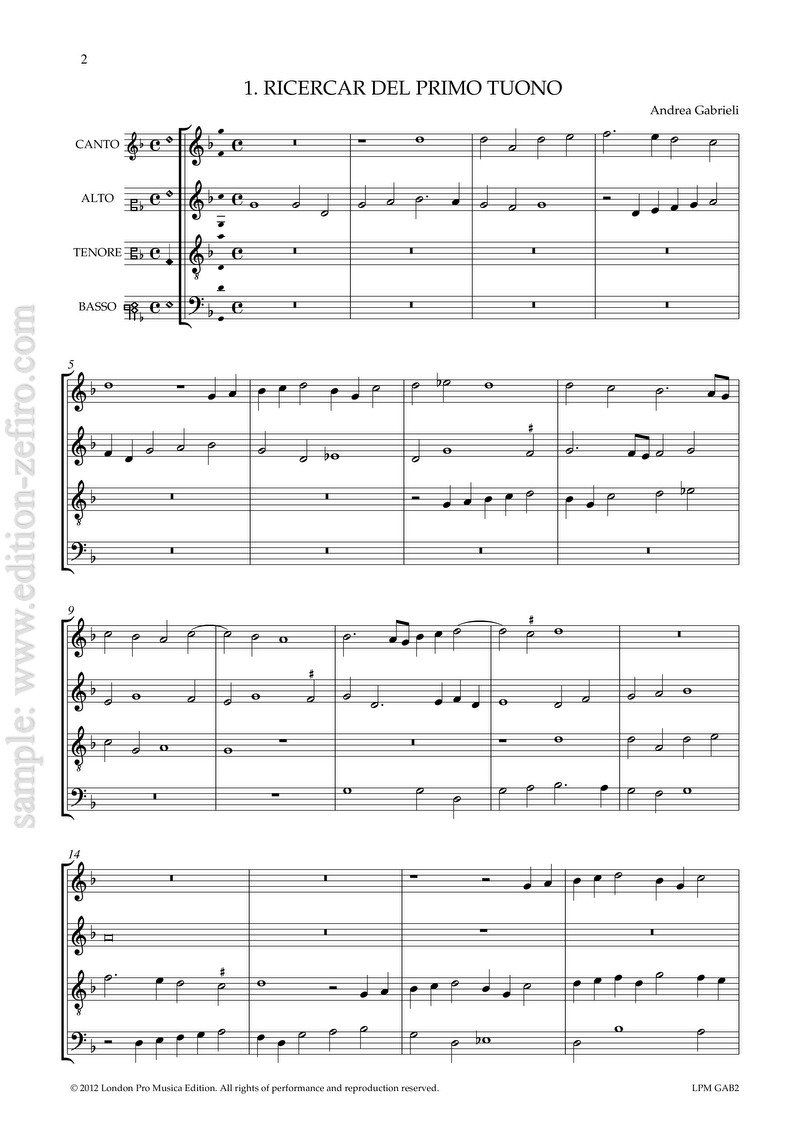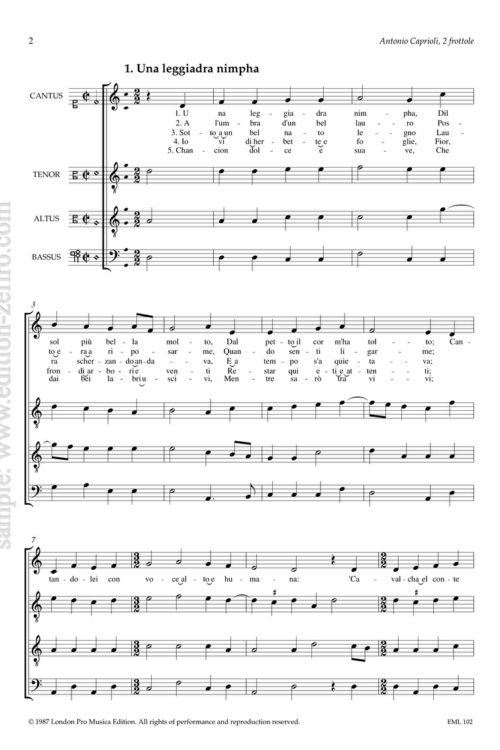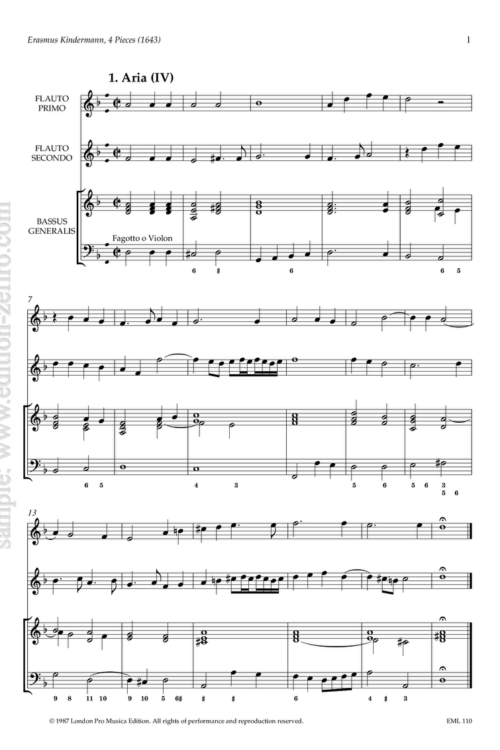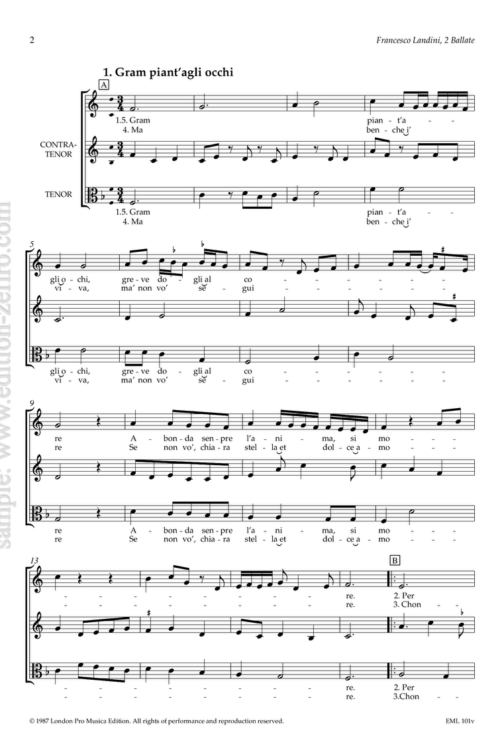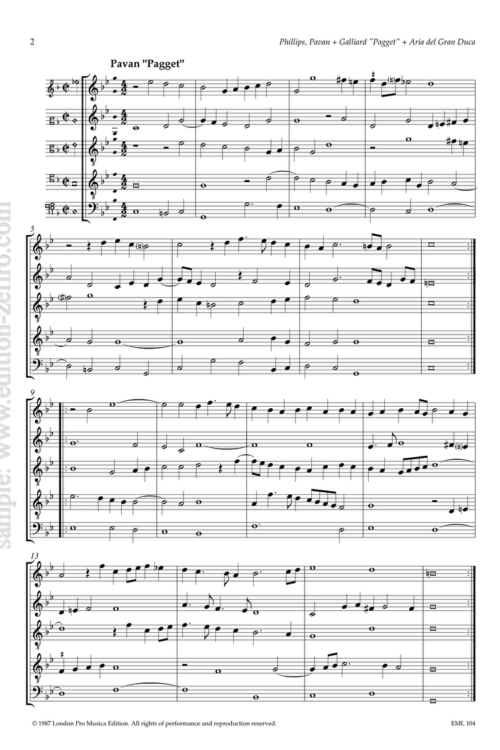These popular ricercars by Andrea Gabrieli are quite varied in mood and style.
Andrea Gabrieli’ seven 4-part ricercars come from a single source, his MADRIGALI E RICERCARI A Quattro Voci, published in Venice by Angelo Gardano in 1589. It is a posthumous collection, the composer having died in 1585, and it is thought that Andrea’s nephew Giovanni was responsible for seeing it through the press. It is interesting that the opening theme of the seventh ricercar, which is today so popular with brass players, was developed by Giovanni in his Canzon Septimi Toni a 8 (no. 6 in the present series). It is striking that both this and no. 5 in the present collection differ strongly from the remaining pieces: they are shorter, more extrovert, even public in character, and give the impression of being conceived specifically for wind instruments.
No. 5 has its origins in Janequin’s programmatic chanson La Guerre: it is not an arrangement of the earlier composer’s work, but an exploration of the distinctive idiom developed by him. Andrea Gabrieli composed two battle pieces, the instrumental Aria di Battaglia (see no. 3 in the present series), and a texted Battaglia already published ↣ .
In this edition the original note values and time-signatures have been retained, except in the triple-time sections, where the note values have been halved, the time-signature in this sections is a simple 3. Editorial accidentals are printed small above the stave, applying to the one note only, while the original accidentals, printed on the stave, are taken as applying to the whole bar unless contradicted. In the parts we have supplied transposed alternatives for nos. 5 and 7.
(Bernard Thomas)


